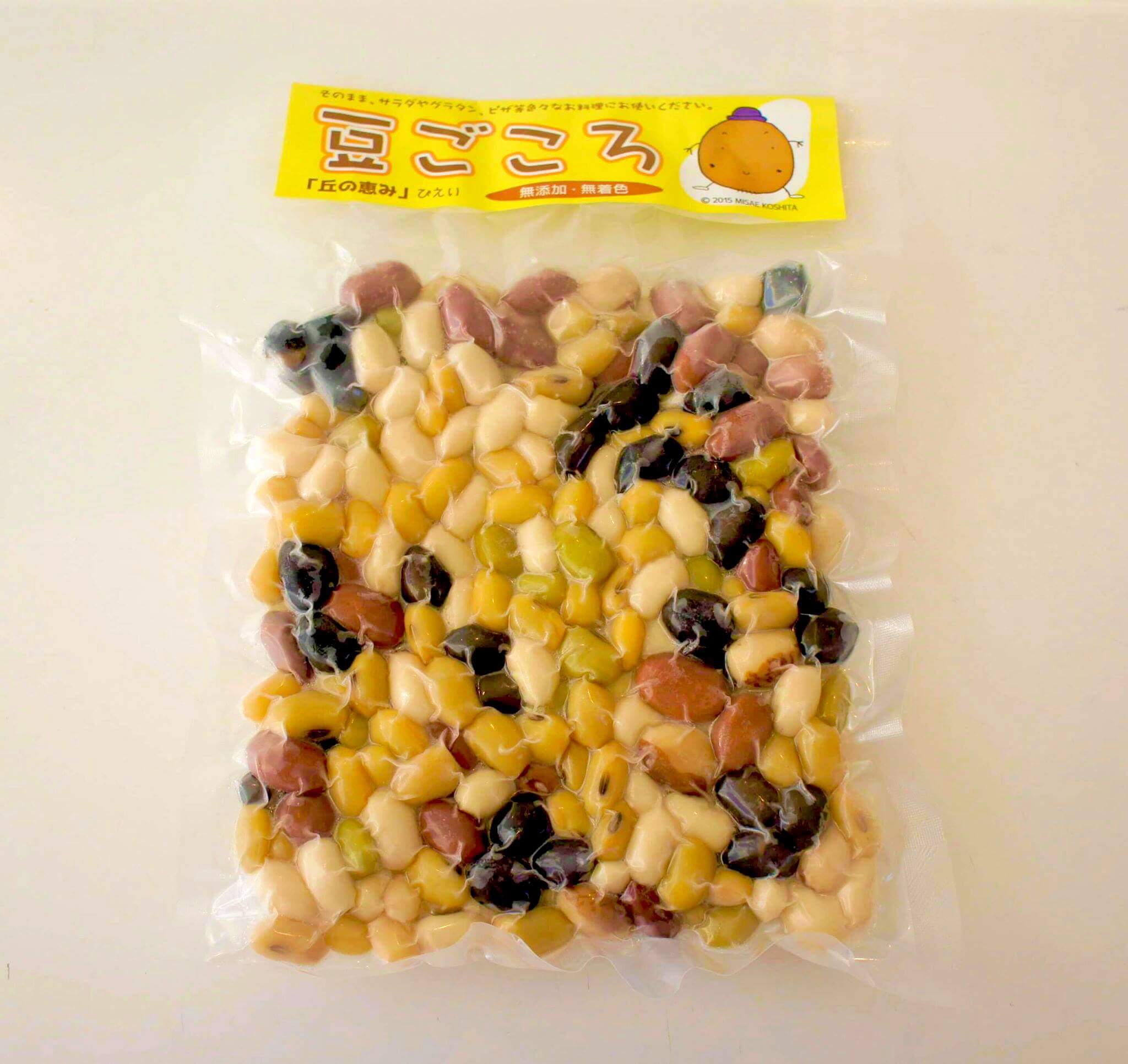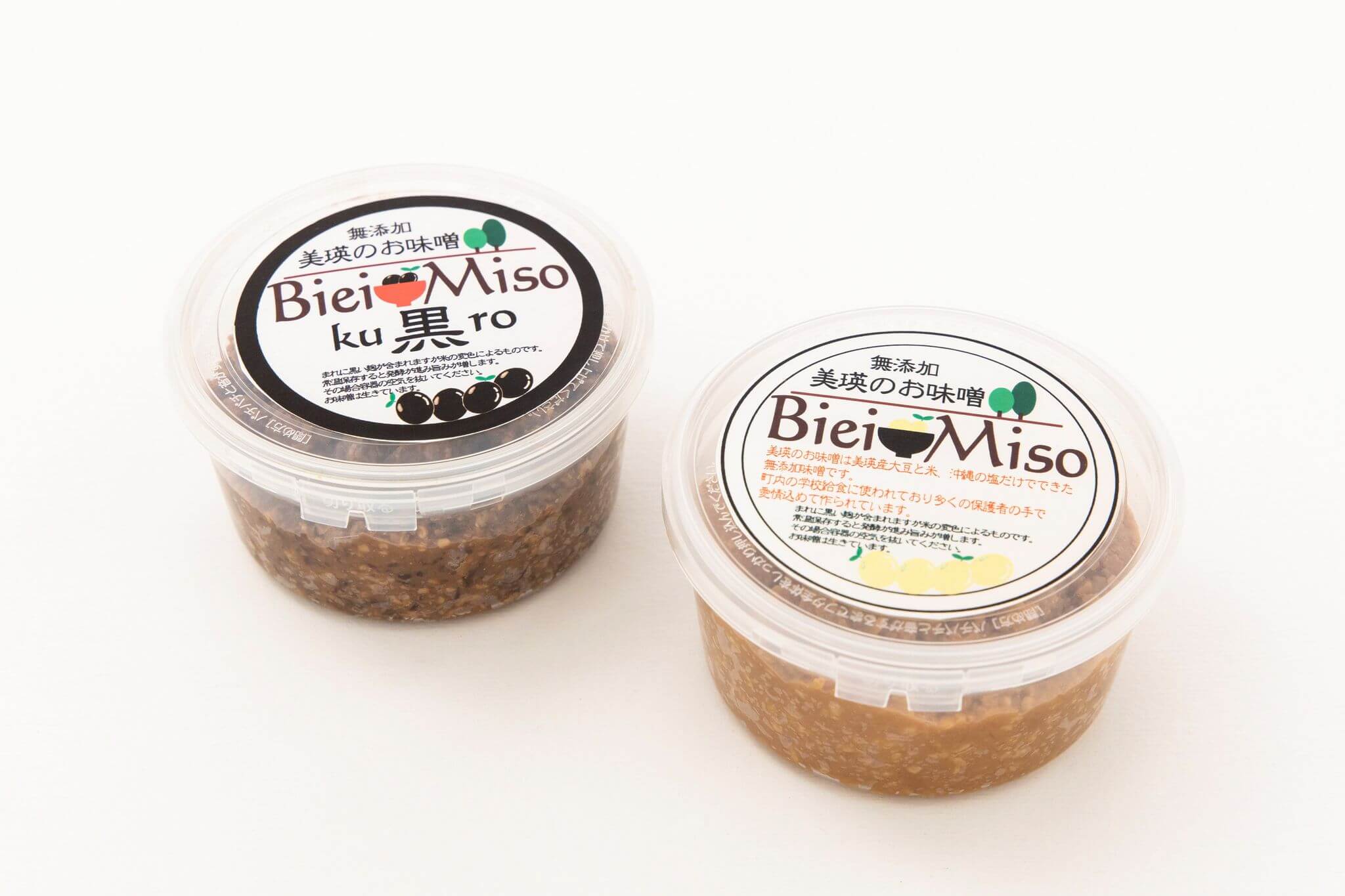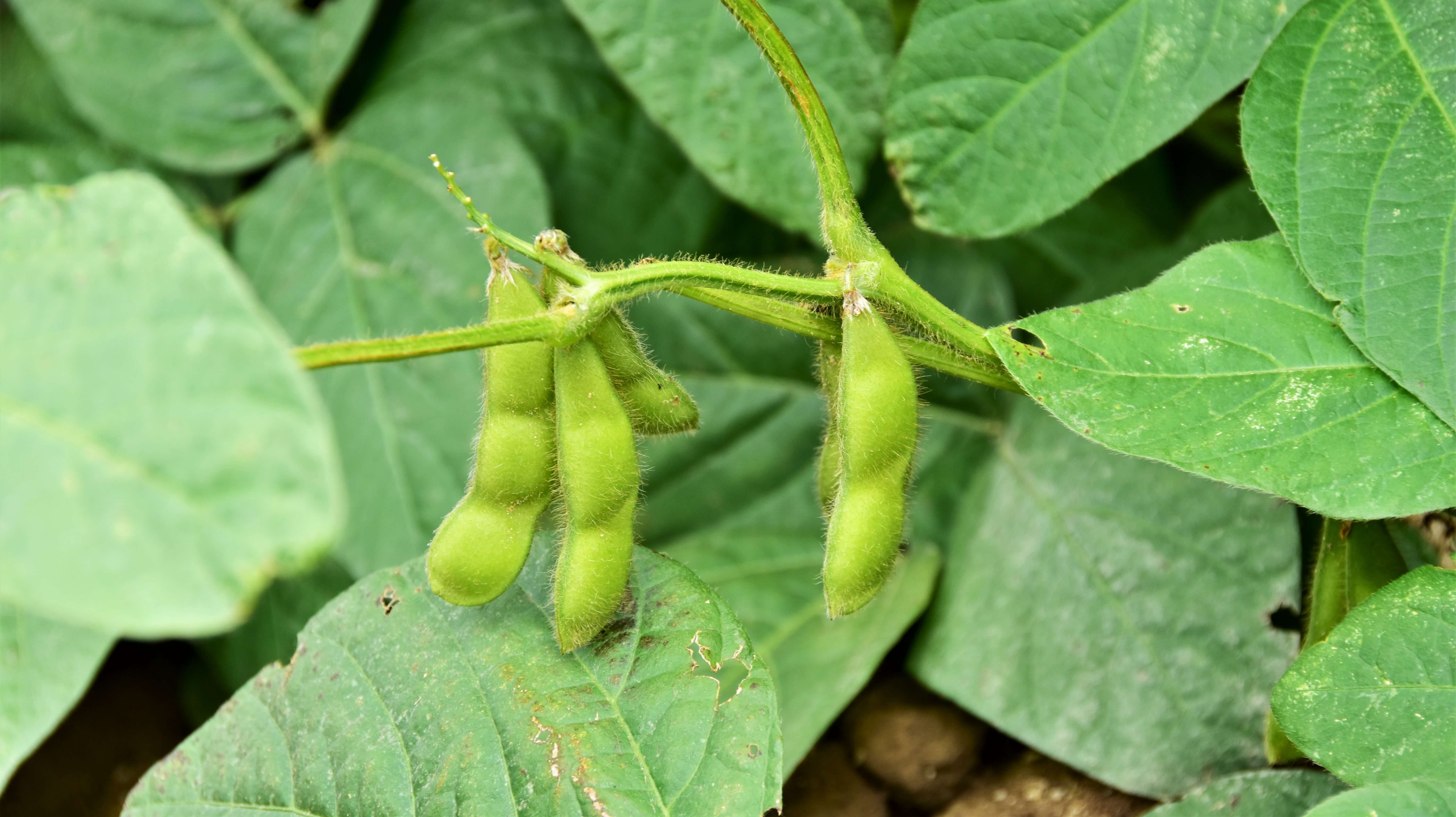
Biei's Bountiful Beans
Beans-- one of the staples of a Japanese diet,
and an important crop for our patchwork hills.
How many types of bean can you list?
There's green beans, soybeans, azuki beans, kidney beans, jelly beans...
(Okay, that last one doesn't count!)
Beans are of huge anthropological importance and have been consumed by humans for thousands of years.
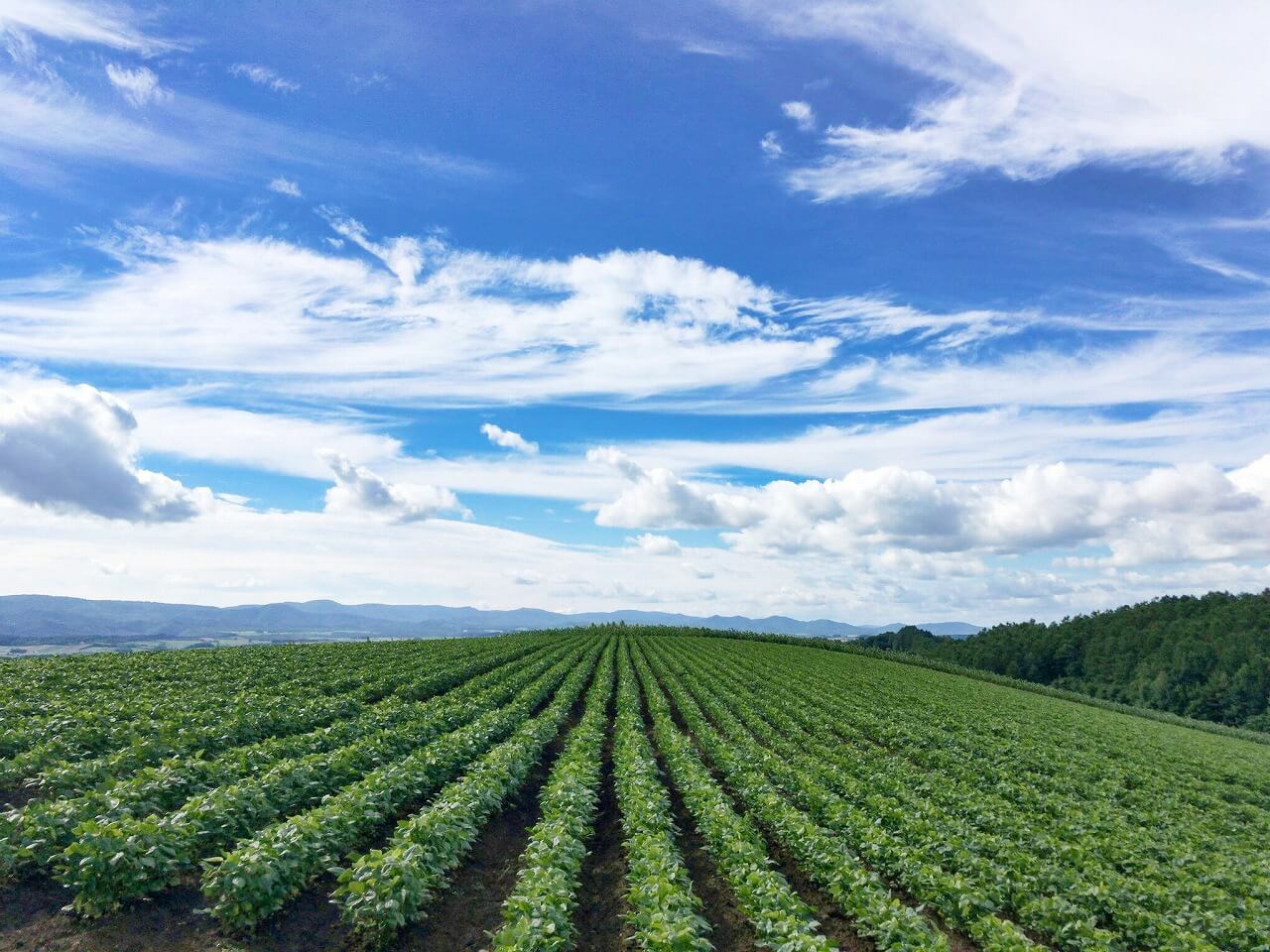 A blue sky and a vast bean field.
A blue sky and a vast bean field.
There is evidence to suggest the soybean was cultivated in China as early as 5000BC and evidence of peas being consumed in Europe can be dated to around the same time. In a time when humans couldn't easily get our protein fix from meat, beans were an important means of filling our stomachs.
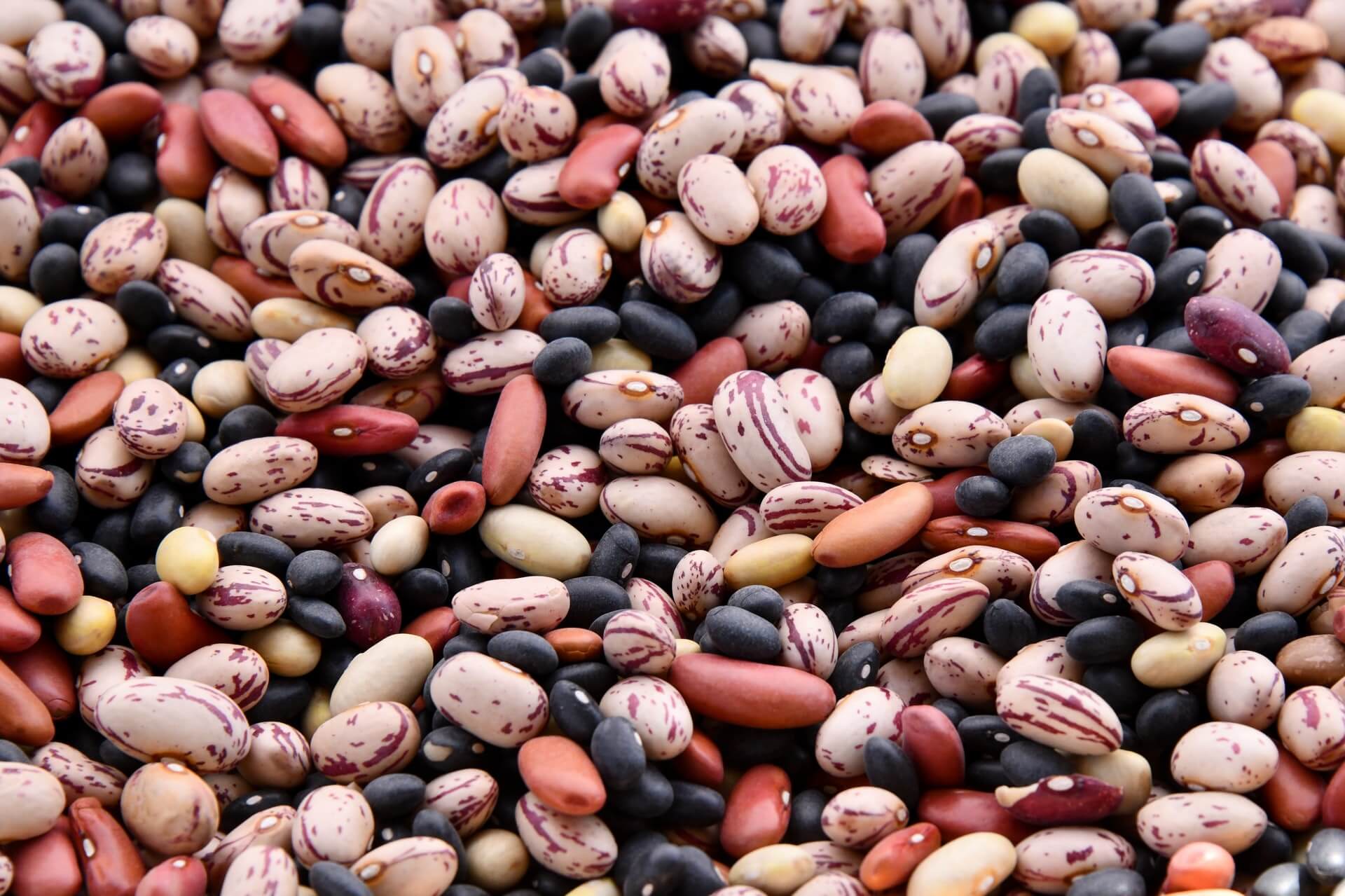
Beans of course have huge cultural importance in Japanese cuisine. Tofu, natto, miso and soy sauce are just a few examples of staple foods in a Japanese diet that use beans. Beans are rich in vitamins and minerals that our modern diets tend to lack, not to mention important proteins and carbohydrates that serve as a source of energy.
Here in Biei, we grew around 2,633 tonnes of several variety of beans in 2020! We are doing our part to contribute to this important aspect of Japanese cooking!
Shall we test your knowledge of Biei's beans?
IMPORTANT
The photos in this article were taking only after receiving permission to enter the farmer's land. Never enter Biei's fields without permission. Farmland is private land and entering without permission is trespassing. Furthermore, bacteria or parasites on the underside of your shoes can get into the soil and can potentially contaminate or damage crops. We appreciate your understanding and cooperation in preserving Biei's landscape for future generations.
1What beans are grown in Biei?
Like potatoes, wheat and sugar beet, beans make up a part of the crop rotation strategy that keeps the soil in our fields healthy and allows us to enjoy the spectacle of patchwork hills year after year.
But exactly what beans are grown in Biei?
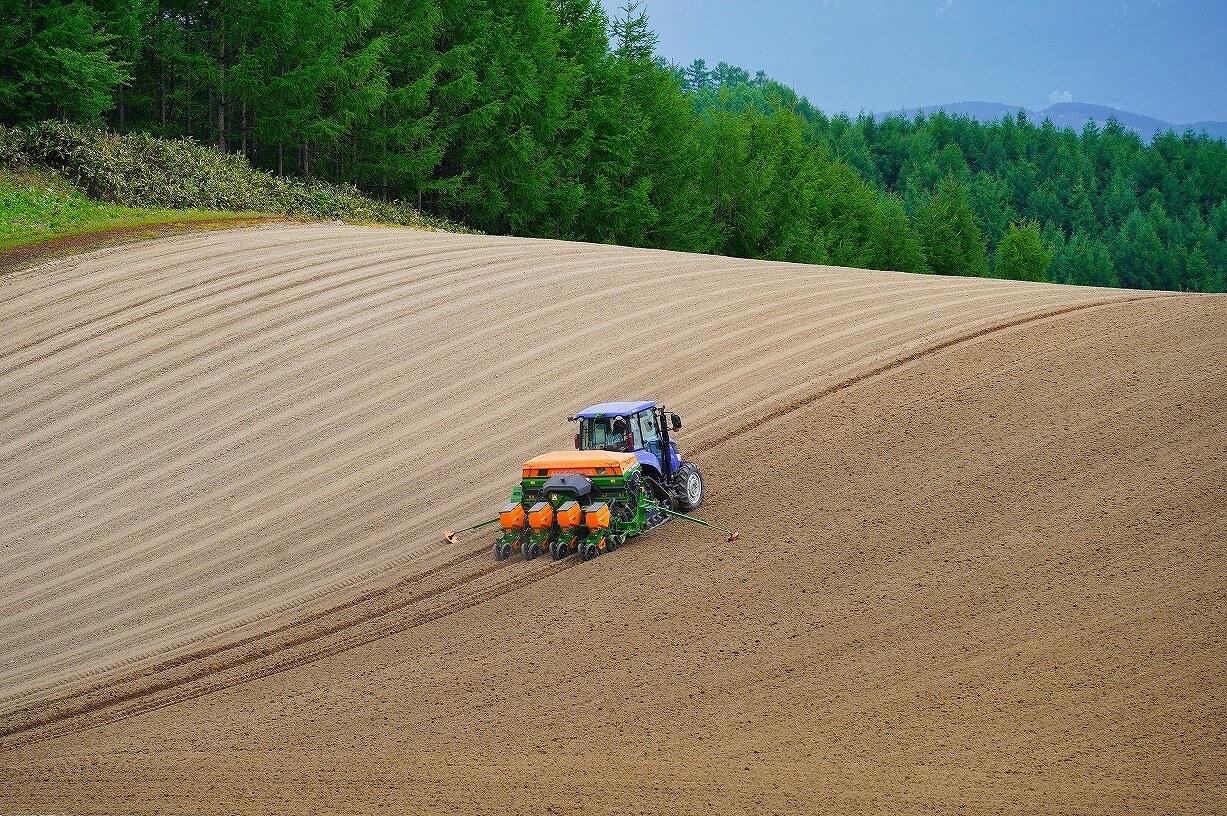 Beans being planted by tractor
Beans being planted by tractor
When the bean shoots first emerge from the soil a few days after sowing, they do look very cute.
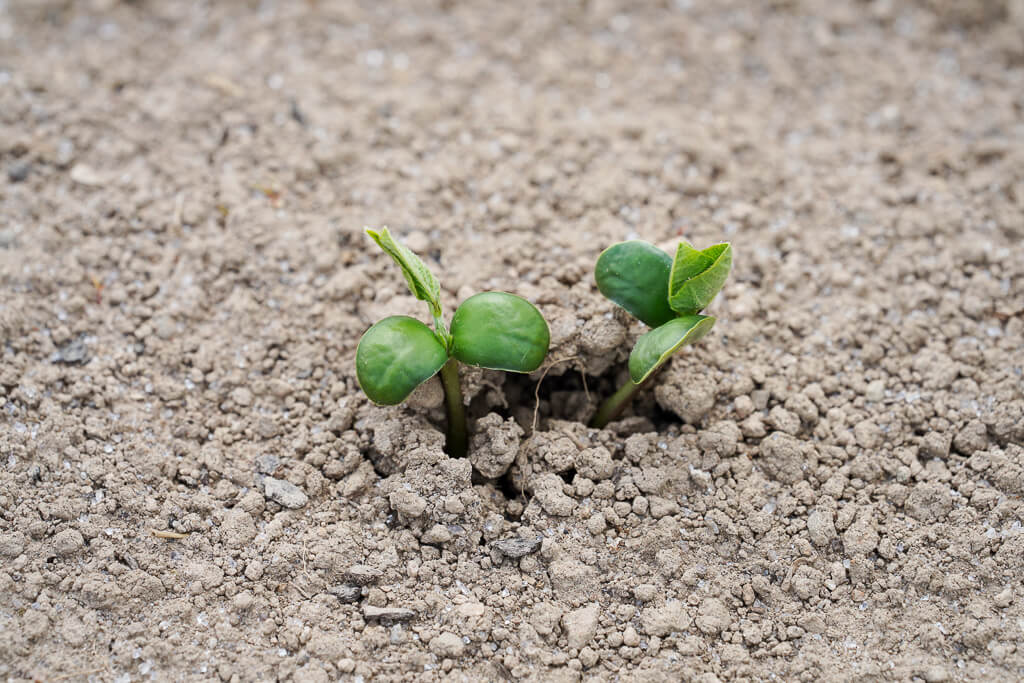
So cute! Reminds me of science class in elementary school!
However, at this early stage all the bean plants look more or less the same! It's nearly impossible to tell them apart...
Once they start to get a little bigger, however, some clear differences start to emerge.
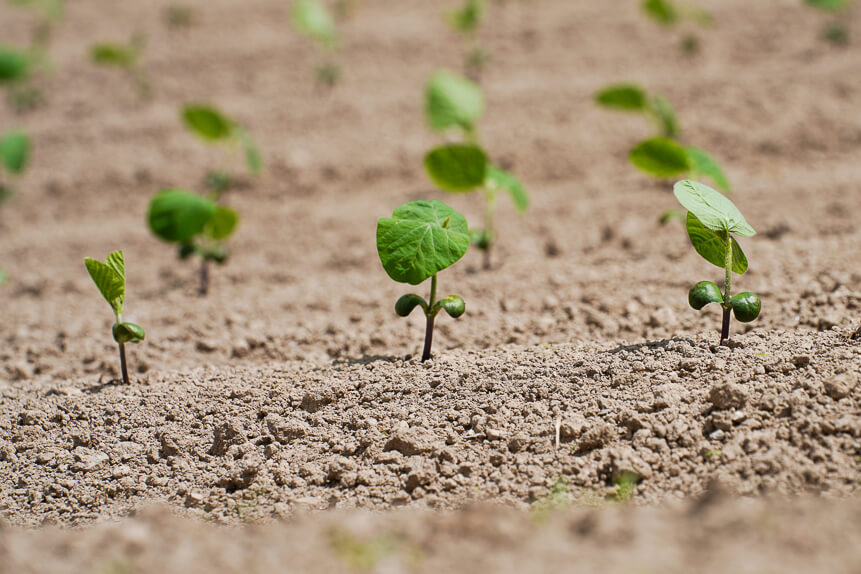 The variety with little "hands" are cute soybean sprouts.
The variety with little "hands" are cute soybean sprouts.
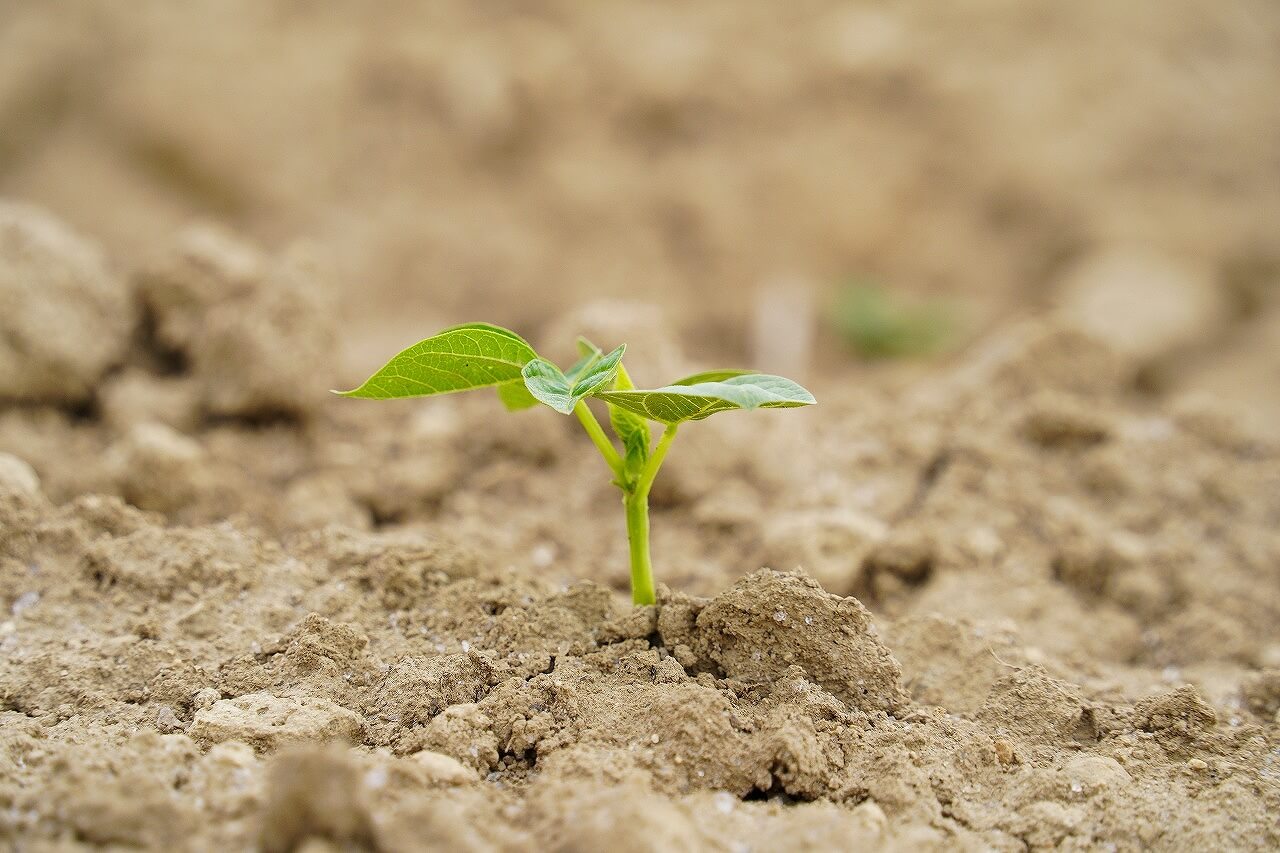 The sprouts that look like they're from a picture book are azuki beans.
The sprouts that look like they're from a picture book are azuki beans.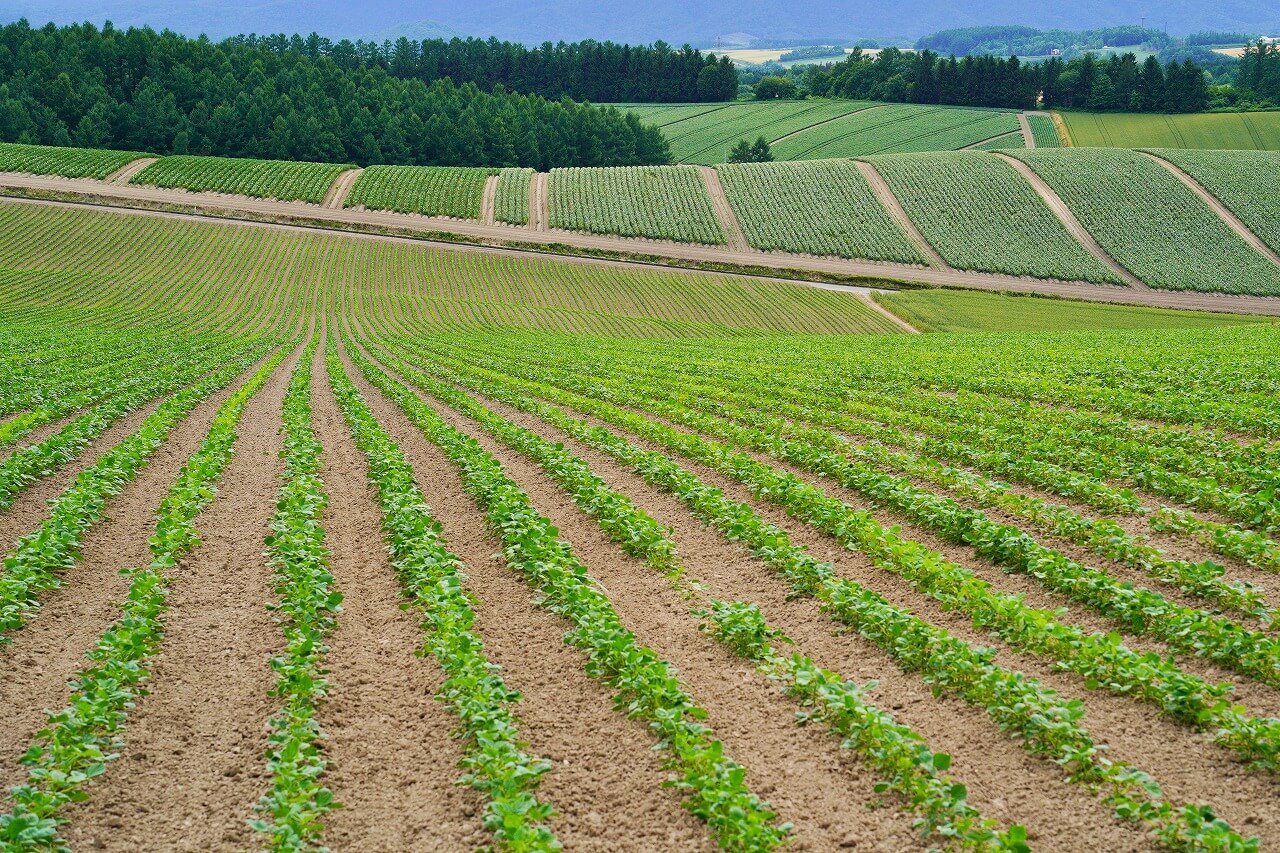 Beans growing taller, planted in pretty green lines.
Beans growing taller, planted in pretty green lines.
The leaves of the growing beans are making beautiful lines on the patchwork hills. Beans add color to the hills of Biei and to the dining table.
Let's take a look at the types of beans grown in Biei.
【Soybeans】
These plants are soybean plants. They are pretty tall, with big broad leaves. As for what kind of soybean, well, here in Biei we grow all sorts! Of course, the most common variety is the standard-issue yellow soybean, commonly used to make tofu, miso, soy sauce and other staples in Japanese cooking. Also grown in Biei are black and green soybeans.
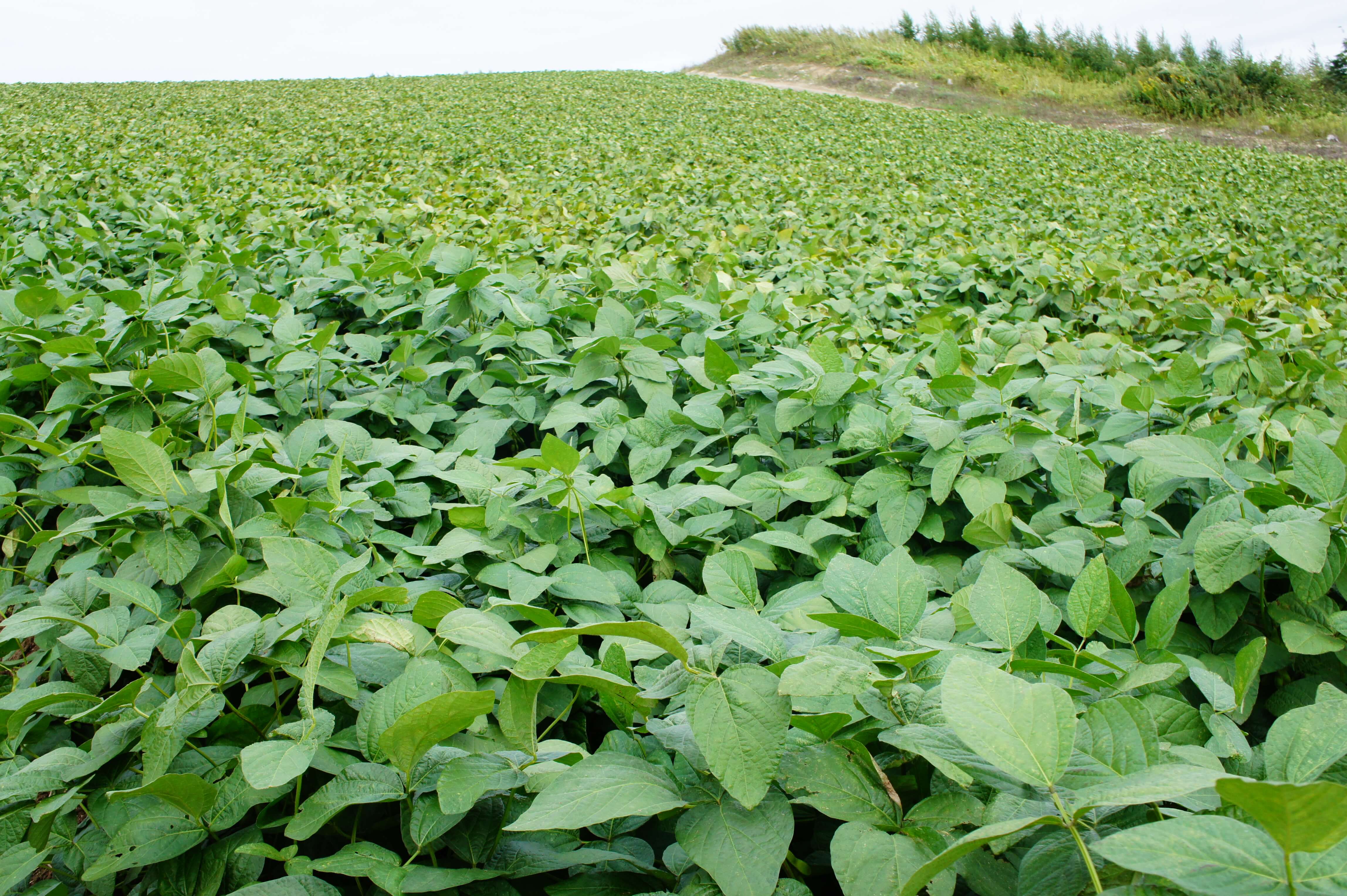 These big, broad, leafy plants are soybean plants!
These big, broad, leafy plants are soybean plants!
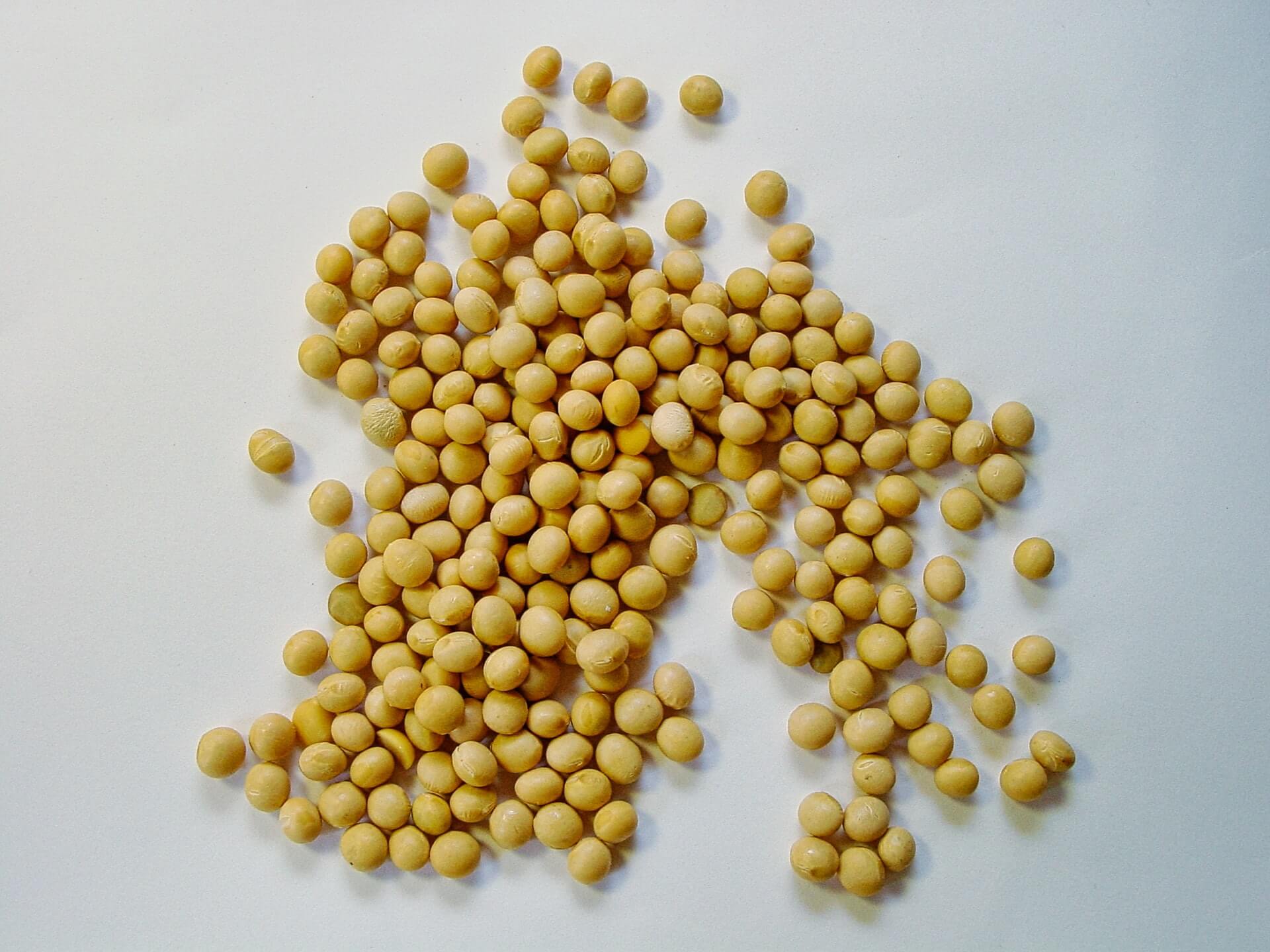
They can also be picked young and boiled to make that popular Japanese snack food, edamame!
 Hey... these look kind of familiar!
Hey... these look kind of familiar!
【Azuki】
Next up are azuki beans. As little as 10 years ago, you may not have heard of these but thanks to the popularisation of Japanese cuisine abroad, they have become quite well-known internationally.
The three major azuki producing areas in Japan are Hokkaido, Tanba in Kyoto, and Bicchu in Okayama, with Hokkaido accounting for over 90% of the total production.
Among the azuki varieties planted in Biei, the "Shumari"variety is made from bean seeds grown in Biei town's seed cultivation fields, planted and raised by farmers in the town, and prepped and stored at the Biei Agricultural Cooperative Association's facilities.
So we can say that from seed to storage, "Shumari" is 100% made in Biei!
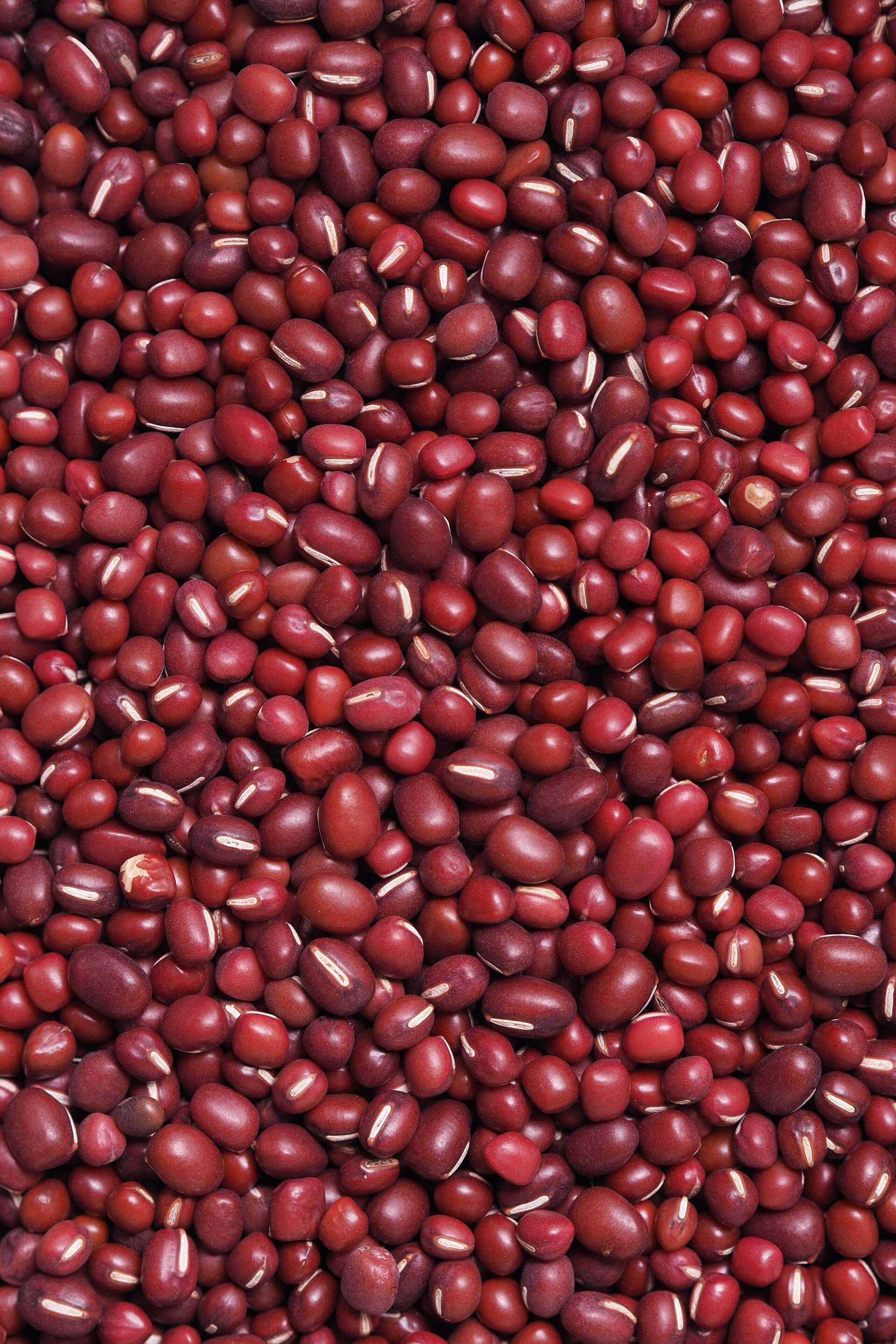
Azuki beans are small and cute, like little red jewels!
Azuki beans can be used in a wide variety of Japanese cooking, but they are best-known as being used to make "anko", a sweet bean paste. Anko is commonly used in lots of popular Japanese sweets such as "daifuku", anko-stuffed rice cakes!
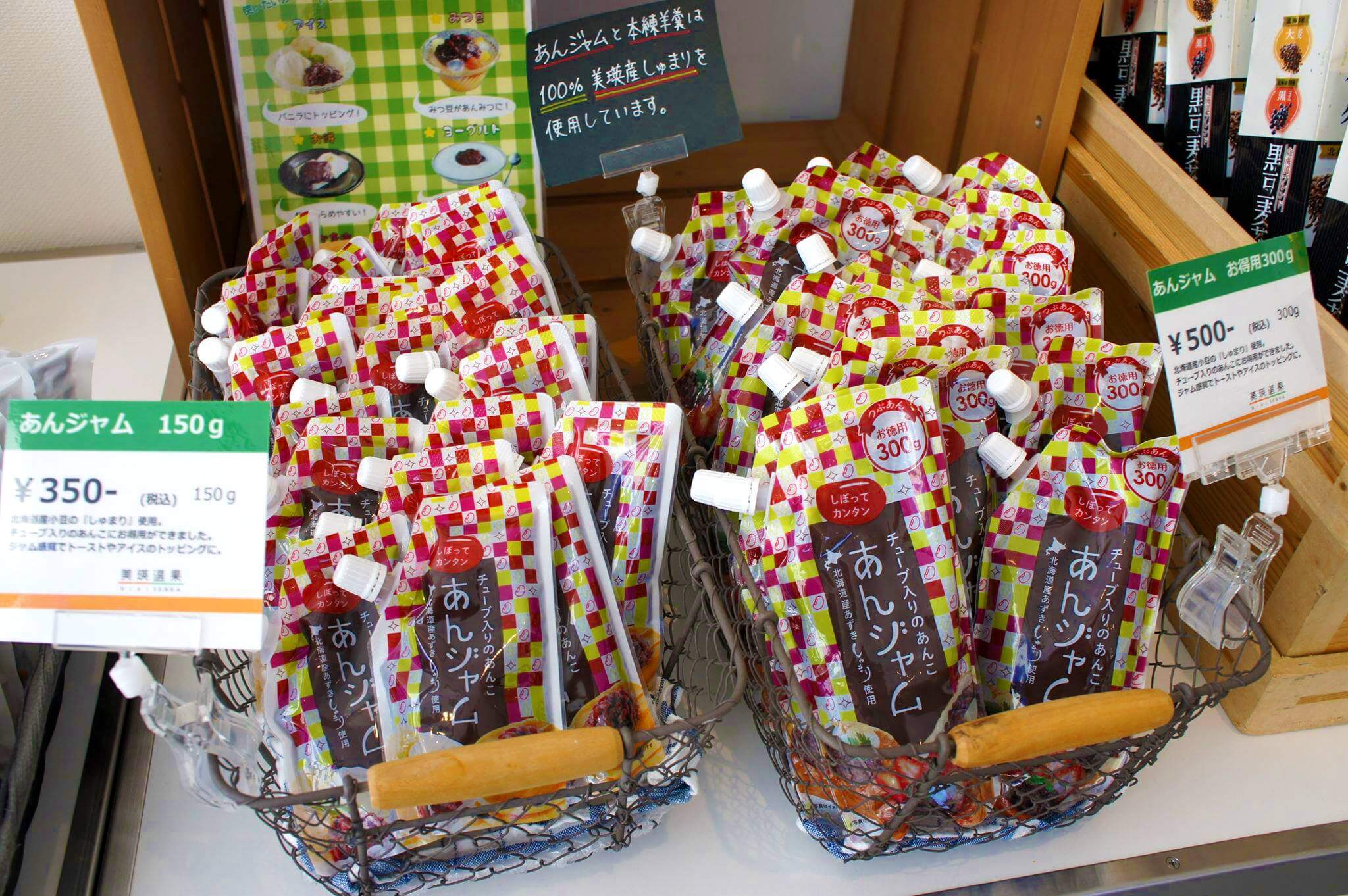 "An-Jam", a red bean paste made with 100% Biei "Shumari" azuki beans!
"An-Jam", a red bean paste made with 100% Biei "Shumari" azuki beans!
【Snow Peas】
As for these rather gorgeous-looking plants, these are snow peas! You can recognize them from their fancy spiralling tendrils and their cute pink and purple flowers!

This looks like it should be in an ornate garden somewhere!
Peas can be used in a variety of ways, such as pea shoots, in the unripe pods as "sugar snaps" or as common green peas, where the soft beans are shelled and eaten before they are fully ripe.
In Biei, the cultivation of peas for use as dried beans is flourishing, and the production of the red pea is the largest in the Kamikawa region. Red peas are important for making rakugan, a type of Japanese confectionery.
2How do you harvest beans?
If you visit Biei in September-October, you may be surprised to still see golden fields among our patchwork pattern!
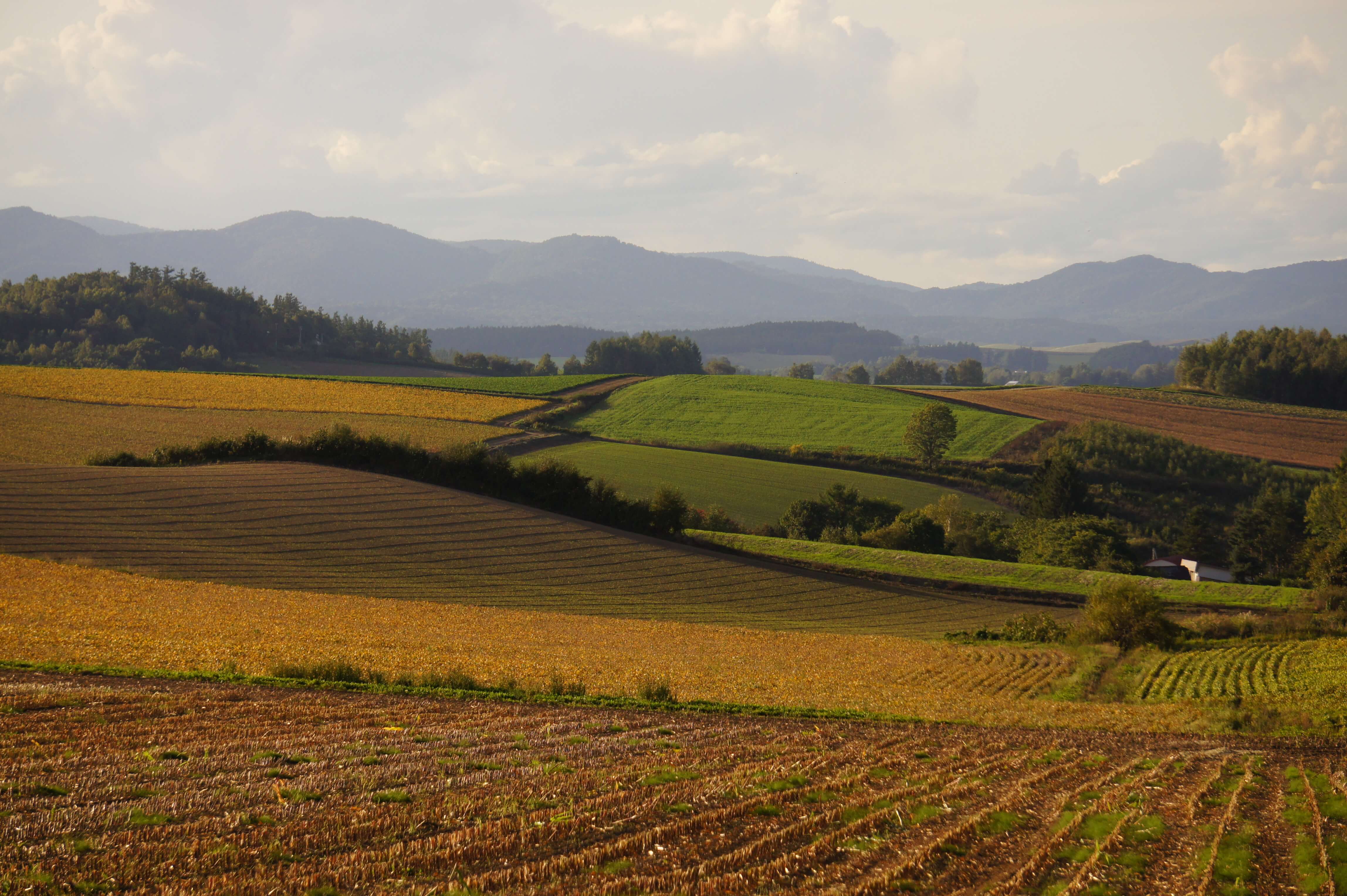 Could it be... wheat?!
Could it be... wheat?!
Well, it may not be golden wheat, but it is golden-something-else...
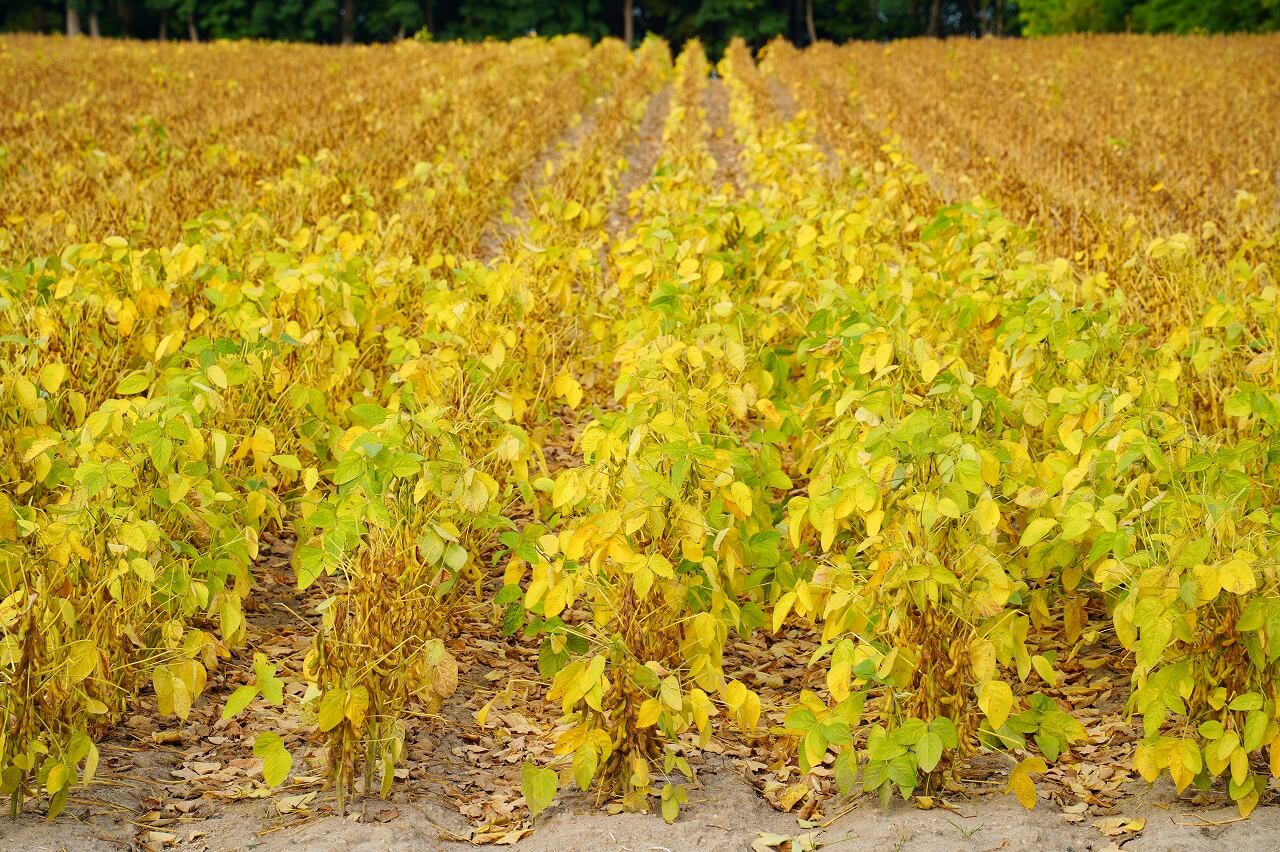 A golden soybean field
A golden soybean field
As you likely know if you have ever purchased beans at the supermarket, they first need to be dried out to allow longer storage times and to enable them to be used in all kinds of cooking. Rather than relying on expensive drying machinery or techniques to do this, Biei's farmers use the Earth's strongest natural drying resource... the sun!
Biei's farmers leave the beans on the plants to dehydrate in the harsh autumn sunlight. The golden fields you see in autumn are the bean plants as they dry out!
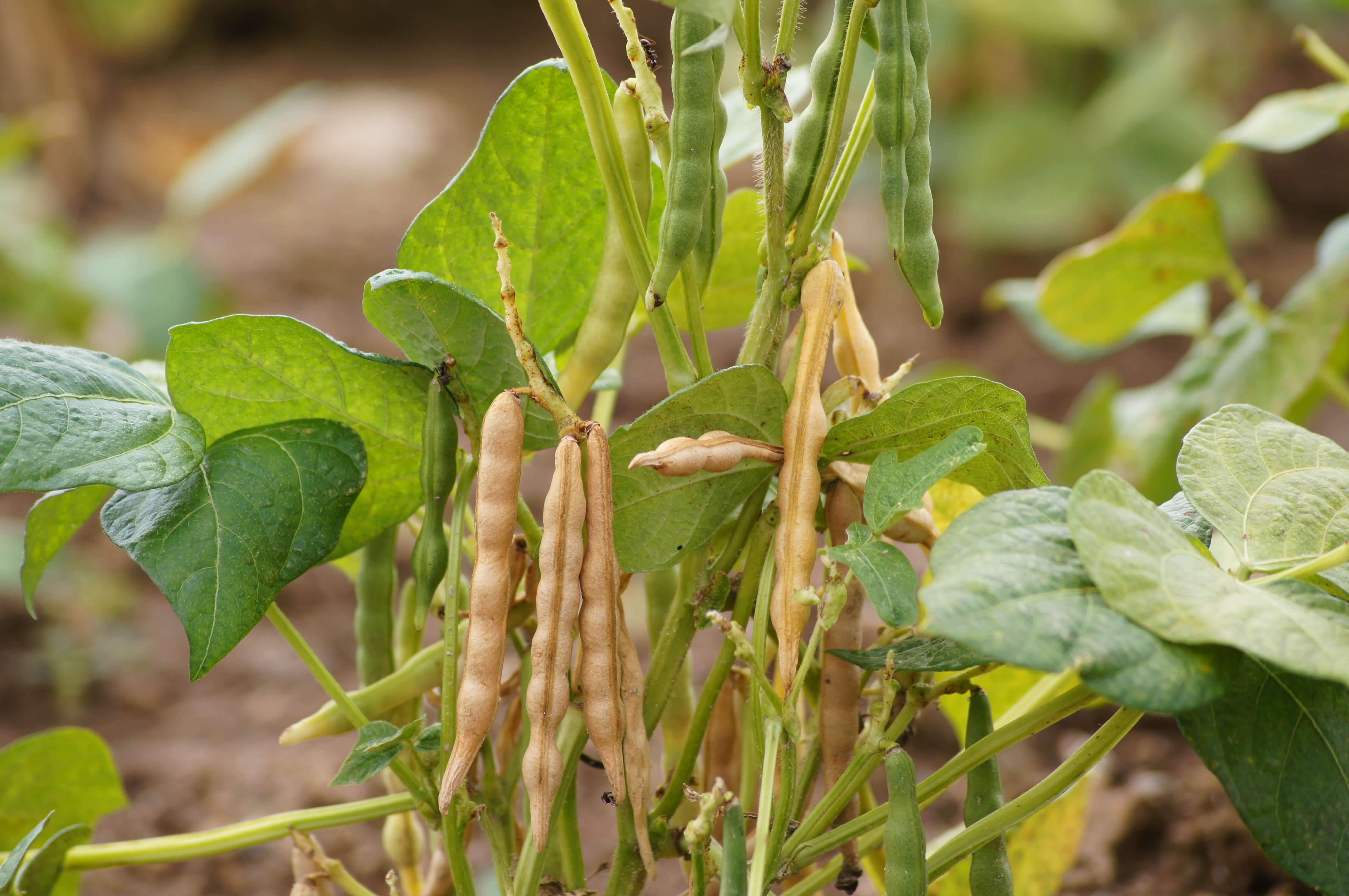
The pods on this azuki bean plant have begun to dry in the hot sun. The pods at the top are green and fresh, while in the middle they are turning brown.
Not too long ago, Biei's farmers used to harvest beans using a method called "mame nio", or "bean mounds". They would gather the beans into mound shapes once dried, and top them off with little waterproof hats!
However, this harvesting method is quite labour-intensive, so mame nio are now a sight that is no longer so common in Biei...
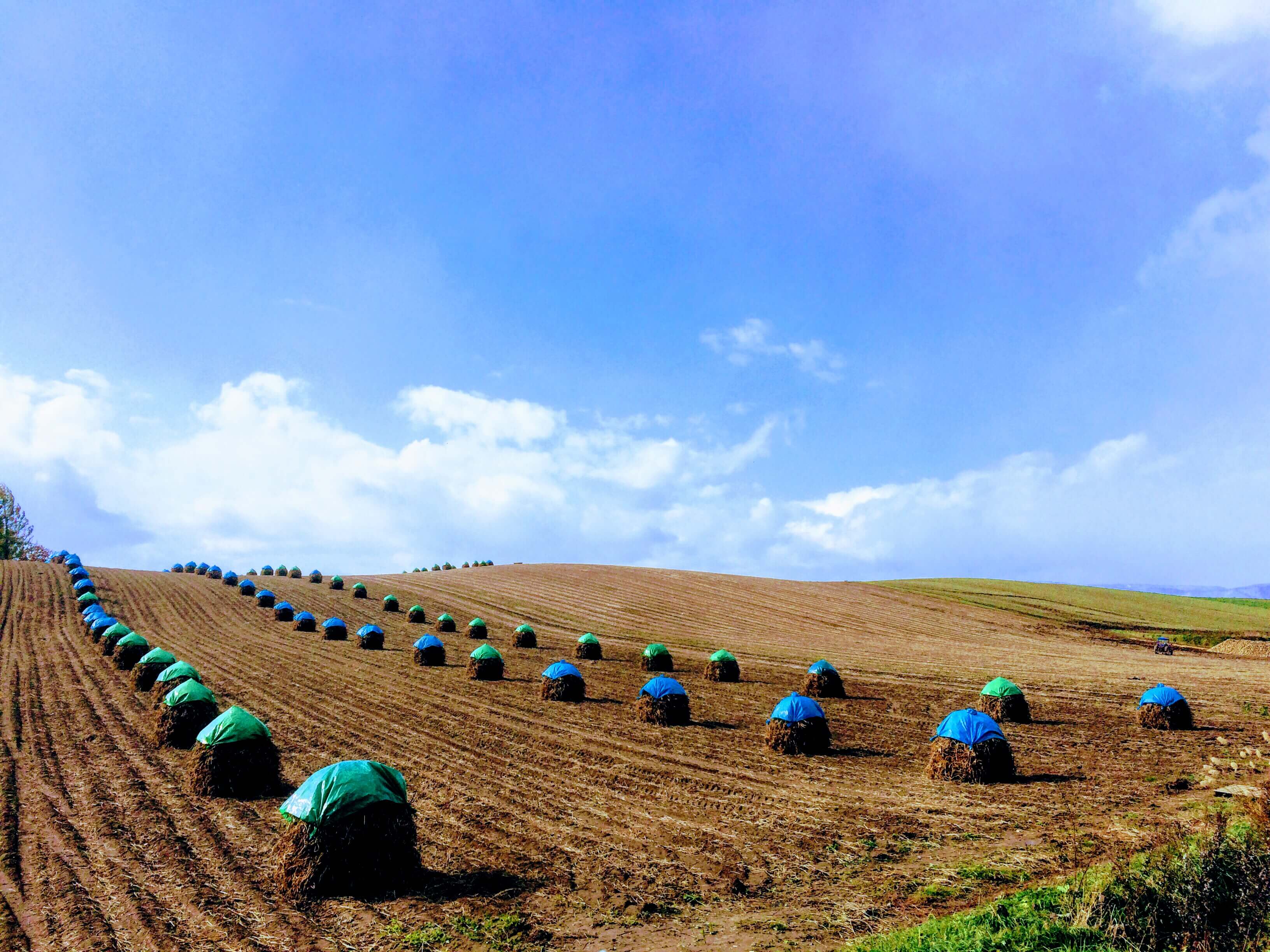
Sadly, fields of mame nio like this are becoming more and more rare in Biei.
Learn more about mame nio here!
Once the beans have dried out sufficiently, they begin to look much more like the beans you see in the supermarket! At this point, they're ready for harvest.
3Enjoy Biei Beans!
We'd like to introduce our top Biei bean souvenir picks to you today. These are all suitcase-friendly, and can be taken back to your home country.
Mame-Gokoro
This bean mix is called "Mame-Gokoro". It is made from six kinds of beans produced in Biei (soybeans, red kidney beans, tiger beans, white beans, black beans and green soybeans) and is lovingly prepared by the wives of Biei! Simply steamed, they contain no artificial additives and are a great addition to any dish.
Oka-no-Okashi
If you'd prefer something on-the-go, we recommend these little snack bags, Oka-no-Okashi! They use freeze-dried black beans and azuki beans from Biei. With a pleasing crunch and a little sweetness, these healthy treats will satisfy your snack cravings!
Biei Miso
Finally, if you'd like to try your hand at Japanese cooking at home, then why not try Biei Miso? This is miso paste made with Biei-grown beans. There are two varieties available, a classic miso made with tasty Biei soybeans, or a darker version made with black Biei beans! Which would you like to try?
Where to Buy
At Biei Senka and Roadside Station Oka-no-Kura, you can buy all kinds of Biei bean products!
Please enjoy browsing for Biei souvenirs!
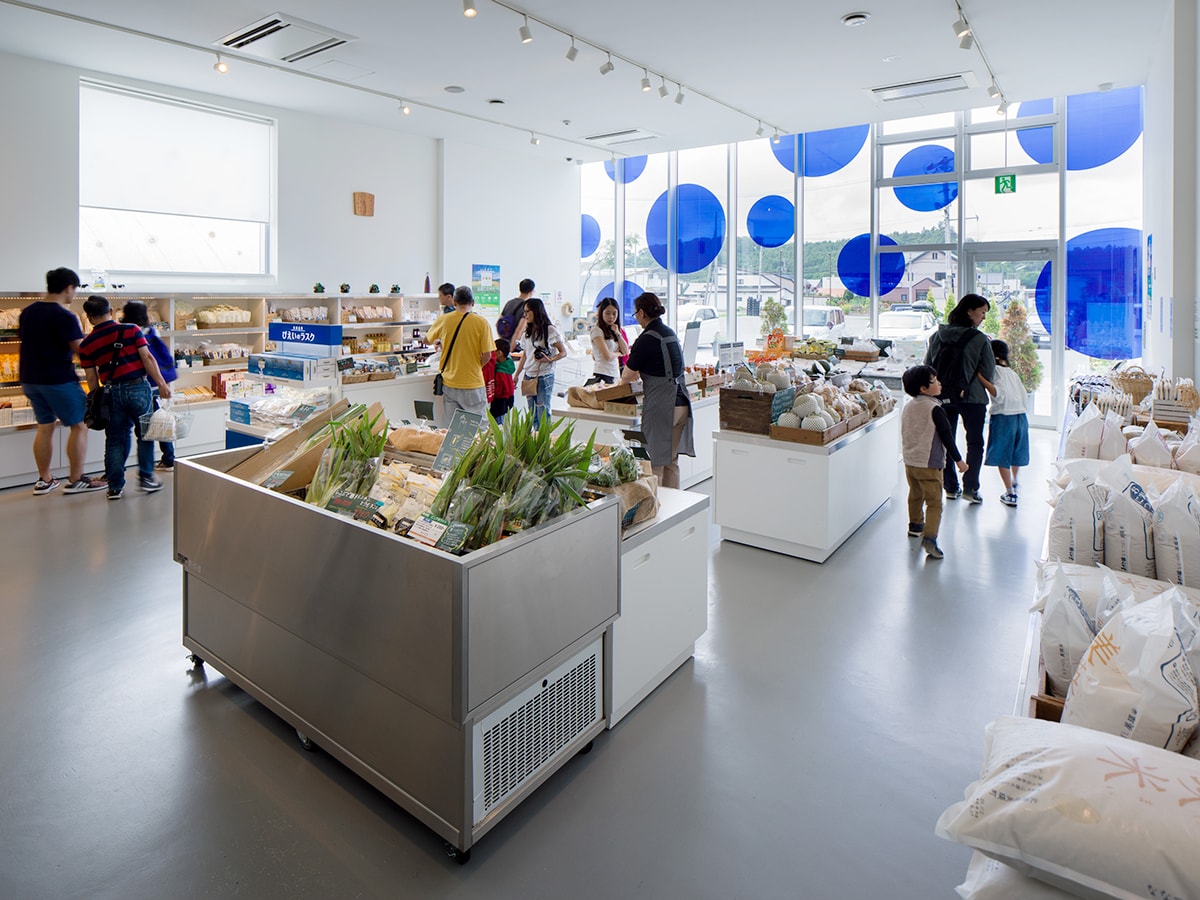
Biei Senka
- Address
- 2-chome Oo-machi Biei Kamikawa-gun, Hokkaido
- TEL
- 0166-92-4400
- Opening Hours
- 9:00~18:00
- Closure Days
- New Year's Holiday (usually December 30th ~ Jan 4th or 5th)
Roadside Station Oka-no-Kura
- Address
- Motomachi 1-9-21, Biei-cho, Kamikawa-gun, Hokkaido
- TEL
- 0166-92-0920
- Opening
Hours - Depending on the season, opening hours may vary.
Please check their homepage for more info.
- Closure
Days - New Year's Holiday (Dec 31 ~Jan 3rd)
But did you know you can do more than eat Biei's beans? You can wear them, too!
You heard that right! Visit Biei's high street handcrafts store la colline and you can enjoy some beautiful accessories handmade with Biei beans! How creative and original!
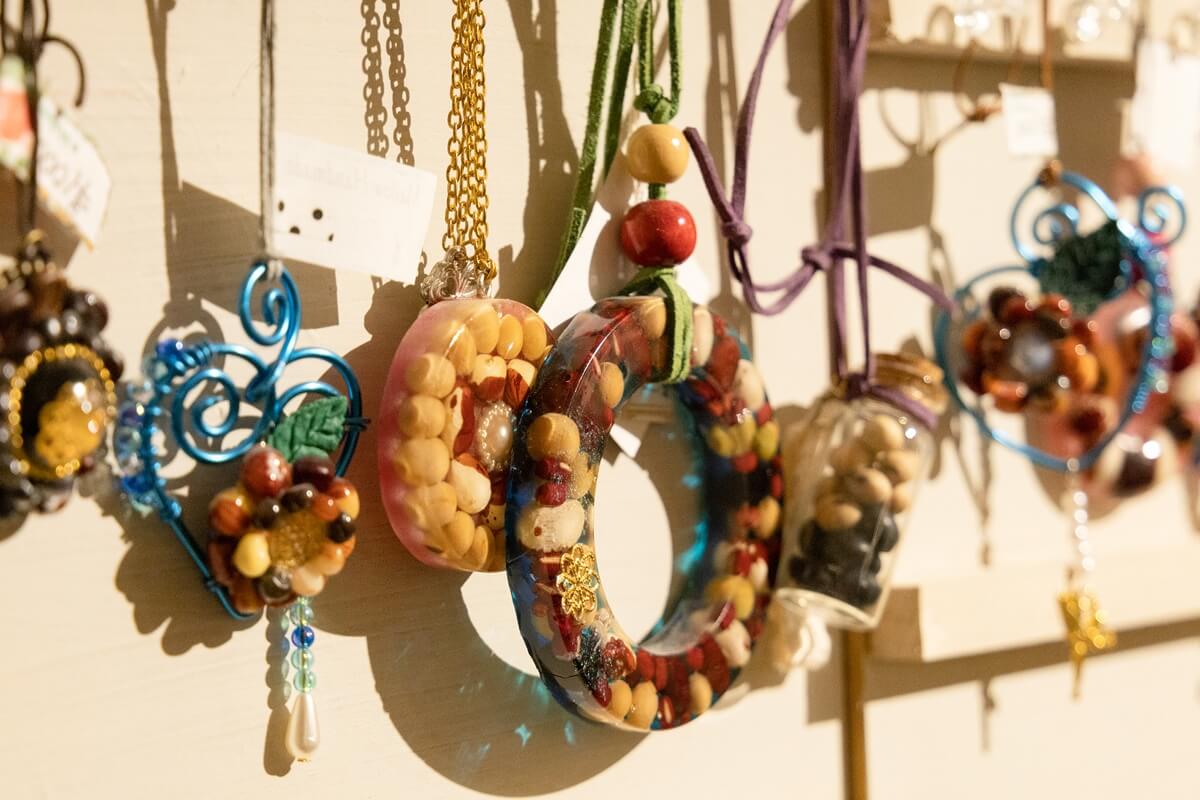
These trendy accessories were made from dried Biei beans! How amazing!
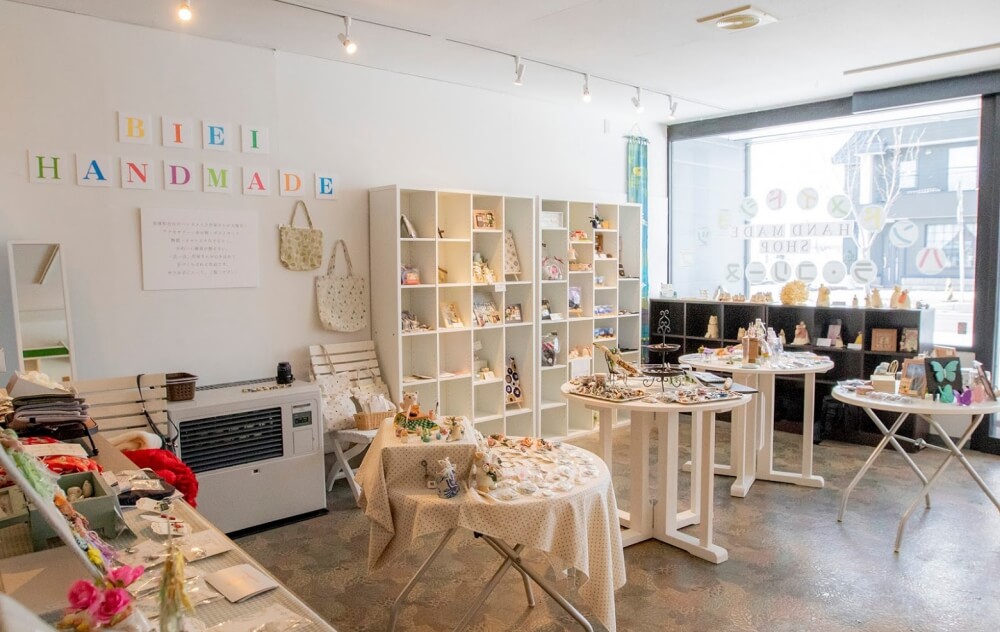
la colline
- Address
- 1 Chome-4-8 Nakamachi, Biei-cho, Kamikawa-gun, Hokkaido
- TEL
- 0166-74-3185
- Opening Hours
- 11:00 ~ 16:00
- Closure Days
- Tuesday ~ Thursday (may change by season-- check in advance)

